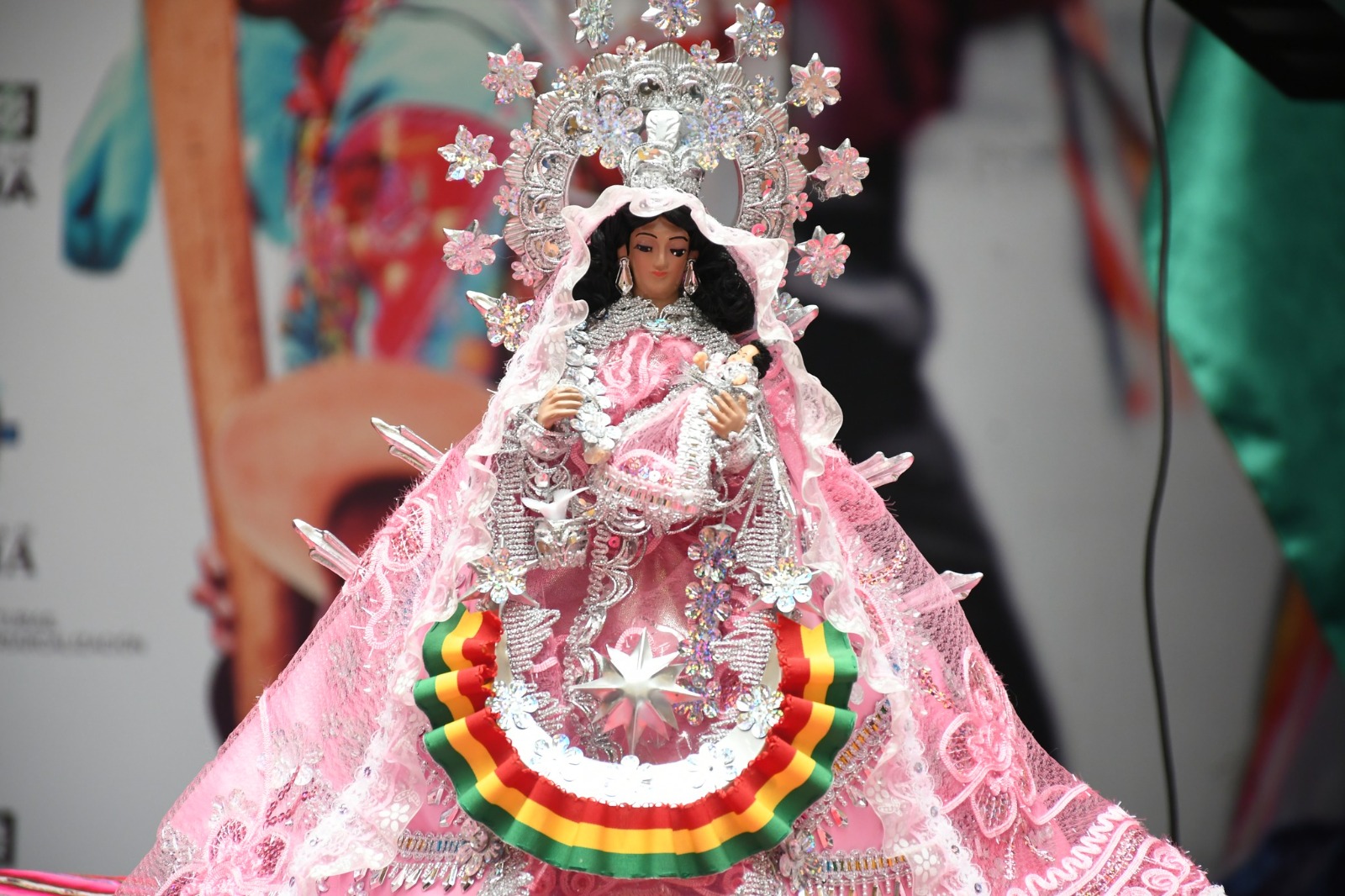They invite the celebration of 442 years of the enthronement of the Virgen de Copacabana

The feast also marks the 100 years of the coronation of deity as Queen of Bolivia, in an event that unites tradition, spirituality and culture.
Copacabana, on the banks of the imposing Lake Titicaca, is ready to live one of the most important celebrations in its history on February 1 and 2: the feast of the Virgen de la Candelaria, which in 2025 commemorates the 442 years of its enthronement and the centenary of his coronation as Queen of Bolivia.
“The Virgin of Copacabana is much more than a religious symbol. It is a point of union between the spiritual and the cultural, with a significance that goes beyond our borders, ”said Richard Paye López, director of Culture and Tourism of the Municipal Autonomous Government of Copacabana.
Yesterday, authorities of the Ministry of Cultures and the municipality officially began the preparations for the feast of the Virgin of Copacabana, an event loaded with tradition and spirituality.
The Mayor’s Office, together with the Catholic Church, the Hotel Chamber, the Federation of Guilds and the lake sector, works in a coordinated manner to finalize details and guarantee an unforgettable experience for visitors who will arrive in the municipality.
A celebration of culture and faith
The holiday will start on Saturday, February 1 with a folk entrance that will gather native dances and traditional expressions such as La Morenada, La Kullawada and other dances that reflect the cultural wealth of the country. This event not only pays tribute to the Virgin, but also to the traditions that unite Bolivia around its diversity.
On Sunday, February 2, the main day, a solemn procession will be held that will travel the streets of the municipality, in which devotees and visitors will take the Virgin in an act loaded with spirituality and devotion.
“This party is not limited to a single day; It is a celebration that occurs throughout the year and that brings together not only the population of Copacabana, but hundreds of pilgrims and tourists from different parts of the country and the world, ”explained Paye, who highlighted the joint work of government authorities and municipal.
Devotion with international impact
The Deputy Minister of Heritage and Cultural and Creative Industries, Juan Carlos Cordero Nina, took the opportunity to regret that, so far, the feast and image of the Virgin of Copacabana have not been declared as National Cultural Heritage.

“We are in difficult times and division, and it is urgent to recognize what unites us as Bolivians. The declaration of the Virgin and her feast as a national cultural heritage should be a symbol of our identity, ”he said.
Cordero also highlighted the importance of postulating the feast of the Virgin of Copacabana to the representative list of UNESCO Intangible Cultural Heritage.
According to the Deputy Minister, the miracles of the Virgin of Candelaria date back to the seventeenth and eighteenth centuries, when Potosí miners went to her in search of protection against the dangers of work in the Casa de Moneda.
His miraculous character has left a mark on generations of believers and continues to be a reason for devotion to various parts of the continent.
Beyond its religious holiday, Copacabana is a unique natural, cultural and archaeological destiny. This corner of the Altiplano not only keeps the Basilica of the Virgin, built between 1610 and 1651, but also a spiritual connection that transcends time.
The vice minister stressed that the influence of the Virgin of Copacabana has reached places as far away as Brazil, where a beach bears his name, and Argentina, where pilgrims venerate it in the region of the Bolivian department of Tarija.
He emphasized that this shared devotion is a testimony of the cultural and spiritual impact of the Virgin in South America.
Aep
(Tagstotranslate) Copacabana
Source link





